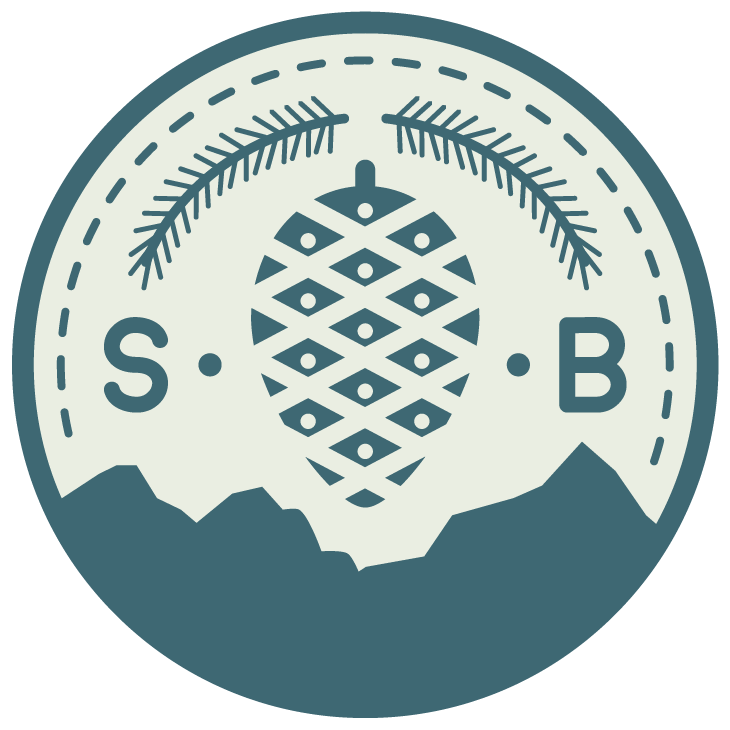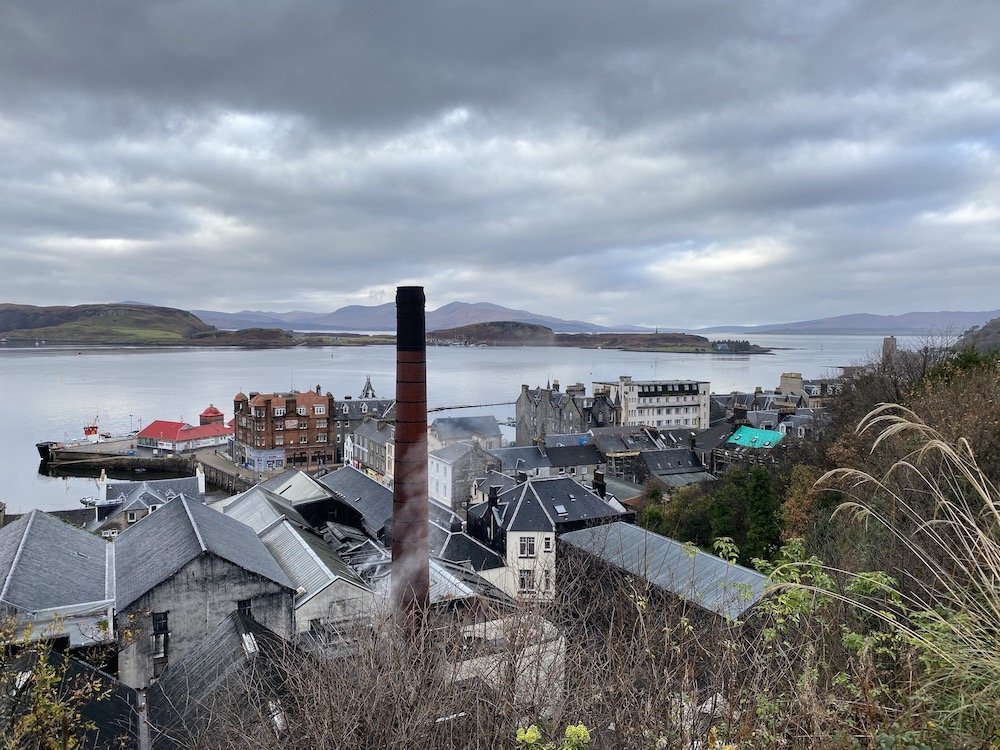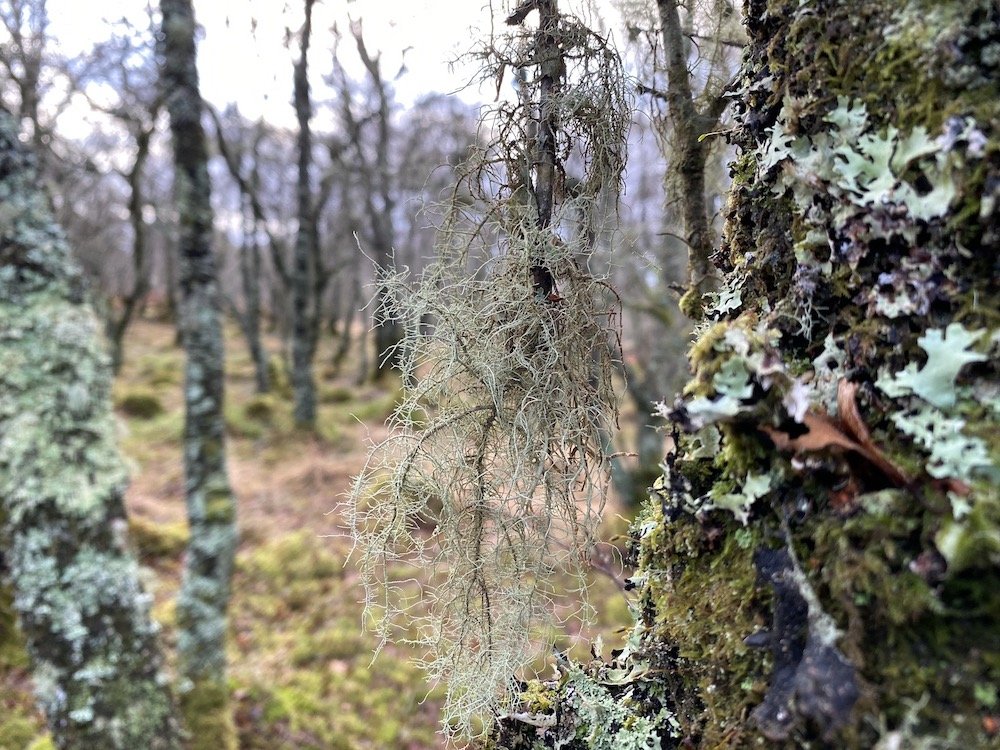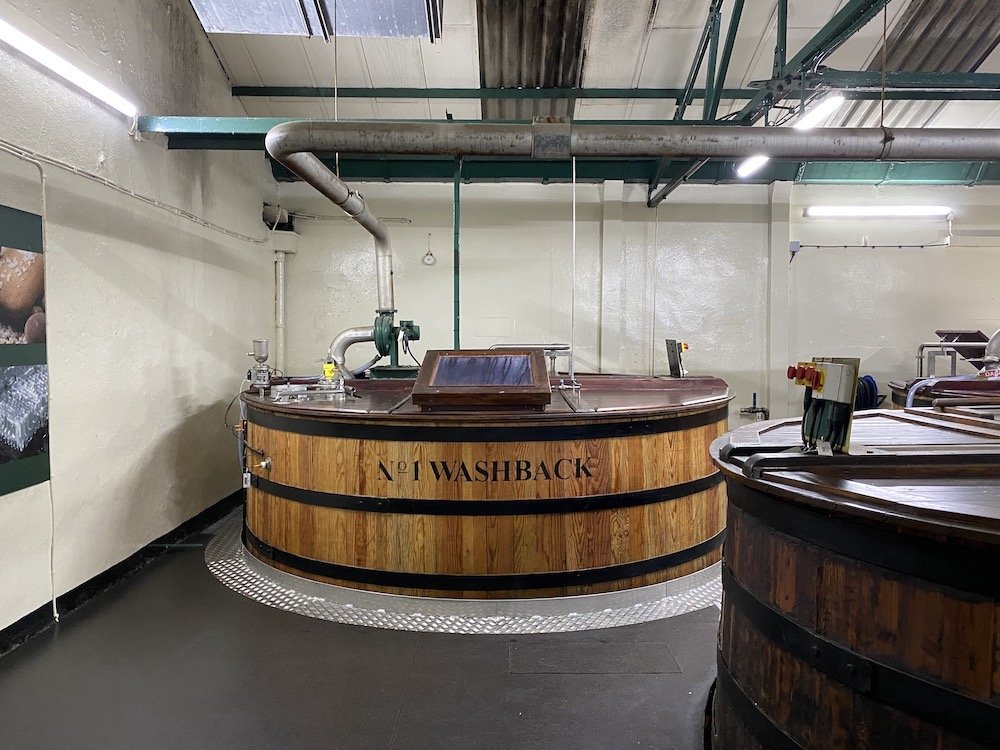One Day in Oban
Sea, rain, and wet earth.
This is the pleasant bouquet of aromas that filled my lungs as I left my Oban apartment for the first time in 14 days. New infections were quite low in Argyll in Bute at the time, so low that most businesses were operating relatively normally, but I'm not going to be that guy. I put in my time and now it's time to go forward with a clear conscience to see what this place has to offer.
The tall windows were quite narrow in my apartment. I only had two slivers of Oban to take in - both with a view of green construction mesh - and now the sudden openness of the outdoor space I had just entered was slightly disorientating. The deep gray stonework of the Kilmore and Oban Church of Scotland cathedral, dark with damp, contrasted sharply with the perpetually light gray sky overhead. It rains a lot here. Nearly anything made of stone had collected moss to some degree. It gave the town a hardy character - it persists despite the extreme elements.
I followed the narrow road to the beginning of the town center until I reached my first objective of the day, Roxy's Café. It had been about 8 months since I had dined in. A tall, red-headed server led me to a seat in a quiet corner and strained to decipher my order of eggs on toast through my slight American Southern accent. After having a laugh and apologetically clarifying that I'm following Scotland's Covid-19 rules despite being American, I took in the sights, smells, and sounds of finally being inside a restaurant again.
The harbor front and the Hebrides
The eggs on toast hit the spot. Time to explore.
The narrow streets leading to the harbor front were busy with cars that zipped quite quickly around corners and turns. It didn't take long for the unfolding view of the harbor, calm gray sea, and the isles of the Inner Hebrides to seemingly suck the wind out of the hustle and bustle, making it insignificant compared to the stark natural beauty. The steely grays and gentle blues of the sea and sky contrasted starkly with the mossy greens and brown-orange of the scrub that was able to scratch out an existence in the extreme wind, rain, and snow that batters the isles of Kerrera, Mull, and Lismore.
One will see the bright red stacks of the Caledonian MacBrayne ferries - locally known as the CalMac - punctuating this muted palette with some regularity. The CalMac hums around the harbor to and from the Inner Hebrides carrying passengers and cars, earning Oban its namesake as the "Gateway to the Isles". Indeed, this makes Oban a great home base if you plan to do go adventuring in the isles. The highlands are not far off either and there are regular buses to Fort William, which lies at the base of Ben Nevis, the UK's tallest peak.
After taking in the seafront view, I turned around and leaned against the railing to take in Oban itself. The buildings follow the horseshoe-shaped contour of the harbor front and the brickwork of varying neutral tones match the sky and sea quite well. Bright red, blue, and green wooden frames of storefronts add an eclectic splash of color. Founded in 1794, Oban Distillery is arguably the centerpiece of the town. Most of the buildings you see at the harbor front gradually sprung up around the distillery after this date.
Perched atop the town's iconic backdrop of Battery Hill is a structure that the uninitiated might mistake for some type of Roman ruin. The story behind McCaig's Tower, or McCaig's Folly as some call it, is a strange tale of narcissism and altruism. John Stuart McCaig, a wealthy banker, originally planned to make the tower a monument to his own family in the style of the Roman Colosseum complete with an art gallery and museum in its interior that housed statues of the McCaig's. There were good intentions behind McCaig's vanity project, however. He hoped that the construction would provide local stonemasons with some reliable work during the winter off-season. The project began in 1897 but halted with McCaig's death in 1902, leaving behind only the outer shell of his grand monument. Today, it serves as a public area with breathtaking panoramic views of Oban and the surrounding landscape.
After meeting my partner and refueling with some downright life-altering coffee from Hinba Coffee Roasters, that's exactly where we headed.
The 144 steps of the Jacob's Ladder path to the tower will get your heart pumping, but then so will the views once you arrive. You can see all of Oban through one of the arched stone windows, from the towering Catholic cathedral to the northwest to the ferry terminal in the southwestern end of town. The gentle rolling peaks of Mull's interior dominate the horizon across the sea. Oh, and there's a cat.
We watched our new friend torment a mouse for a while, then left the tower and took a small road back into town. Some of the residential areas down the back streets had terraces with colorful tiled mosaics that almost seemed intentional in bringing some life to the neutral tones of the brickwork and surrounding landscape. These little paths wound back into the busy shops and restaurants at the harbor front. I was feeling stiff from all those stairs after doing almost no physical activity in quarantine, but the day was just beginning. That fire of the adventurous spirit had already been lit and was hopefully going to carry me through the day. We trudged back to the sea to follow the coastal path north toward Ganavan.
“The gentle rolling peaks of Mull's interior dominate the horizon across the sea. Oh, and there's a cat.”
Dark Age castles and misty, mossy forests
As we continued up the coastline, we spotted an odd silhouette jutting out of the grassy stretch of ground next to Oban's tiny lighthouse. This was Fingal's Dog Stone, a once massive conglomerate rock formation that was likely deposited by a catastrophic flood over 415 million years ago, now weathered with trees growing atop it.
An alternative explanation for this rock's strange shape hypothesizes it was once where the giant Fingal chained his beastly hound, Bran, in between hunts. The dog struggled and paced around the stone until it was worn down to its current shape. James Macpherson, a prominent Scottish writer and poet of the late 18th Century, had this to say of Fingal's impressive hounds:
“With horse's breast, with depth of chest,
With breadth of loin and curve in groin
And nape set far behind the head-
Such were the dogs that Fingal bred.”
Seems legit enough for me.
Beyond Bran's tether and further inland on a clifftop was something that was definitely on my bucket list to see while in Scotland: a proper medieval ruined castle. I don't want that maintained shit. I want to see a ruin that time forgot. Dunollie Castle fits the bill perfectly. Dating back to as early as the 600s in the Early Middle ages, it was attacked, rebuilt, and passed between hands several times over the centuries. It was an important fortification of the Gaelic kingdom of Dál Riata until it passed to the MacDougall clan as they rose to prominence in the 12th and 13th Centuries.
“With horse's breast, with depth of chest,
With breadth of loin and curve in groin
And nape set far behind the head-
Such were the dogs that Fingal bred.”
The interior grounds of the castle were closed due to Covid, but its weathered, crumbling walls gripped by ivy and topped by grass was an impressive enough sight to take in from afar. It's hard to know how many people died trying to breach the walls over the ages, but a safe bet is more than a few.
You can't have a castle like this without some type of enchanted forest nearby, which is exactly what you'll find if you wander up the path to Dunollie and take an immediate right up toward Battleship Hill. Instead of following the slippery path to the hill, you can duck into the forest, which is the spur-of-the-moment decision that we made - quite possibly guided by ancient Celtic spirits, or something? That's the vibe we got anyway as we entered what seemed to be Fangorn Forest straight out of The Lord of the Rings.
Sunlight filtered through a light mist and the air was completely still. It wouldn't be hard to imagine uneasy Dark Age travelers on the lookout for witches as they made haste to get the hell out of this woodland. The trees were gnarled and disfigured from years of strong winds, and they were draped in pale green shawls of moss. Perhaps there were still witches among us after all. If so, they said nothing to help us when we lost the path and had to backtrack through the menagerie of green ferns, moss, and lichen that somehow persevered through the cold autumn weather.
A private tour of Oban distillery
After stumbling out of the forest hex-free into a random residential area with apartment blocks, we were ready for a stiff drink. Let me tell you, after remaining fairly sedentary for 2 weeks, my legs and back were feeling it. That wasn't going to stop me from enjoying my first ever distillery tour in Scotland and seeing the inner workings of what was arguably the beating heart of Oban.
I was actually no stranger to Oban whisky at that moment. By complete chance, I had picked up a bottle of Oban 14 on Taobao the year before while still living in China. It quickly became my favorite Scotch whisky and it was complete happenstance that I'd ended up in Oban and was about to see how the sausage was made, so to speak.
The three main roads of the town center intersected in front of the large dark gray stone building capped with a single tall orange and black smokestack. The shop at the front of the distillery was deserted, so deserted in fact that we would be getting a private tour. It doesn't get much better than that. Our friendly guide Gordon's knowledgeable commentary added the perfect level of context as we navigated through the large wooden vats and copper stills learning exactly what happened and where. As Gordon put it, "we're basically making bad beer." Up until the point of actual distillation, the processes were nearly the same, and the room really was filled with the floral, bready aroma of malted barley one would expect in a brewery.
According to Gordon, the type of whisky produced in this region of Scotland is divided between the very peaty, smoky whiskeys of the isles and the sweeter, smoother whiskeys of the highlands. Oban straddles these regions and incorporates elements of both. It has a delightfully rich vanilla and honey flavor balanced with a mild peaty finish that lingers. This is a whisky that has many layers and I always seem to unravel a new one every time I have it. We were able to sample it from barrels at various stages in the aging process - a completely unique experience that you'll only enjoy if you make the trip here yourself.
I don't want to give too much away here since I plan to do a big write-up about this tour for my Passport Beerlandia segment, but Gordon did an amazing job of educating us on the process and history, followed all the Covid guidelines, and loaded us up with lots of freebies to sample back at home base (on-premises tasting was not allowed at the time due to Covid-19 restrictions).
The fish and chips war
After one of the most jam-packed Day 1 travel experiences I've had in a while, I had a black hole in my stomach that was craving something fried and hearty that would send me into a coma with the help of some of that whisky. In Oban, the only right answer is fish and chips. A cheeky chippy is a ubiquitously British institution but they don't play around here. There's a turf war on these streets between cod cartels that have the backing of some of the biggest names in the culinary world. The Oban Fish and Chip Shop proudly displayed Rick Stein's endorsement in large lettering on their front window while Norie's sported a very pixelated photo of Gordon Ramsey in the shop. Both establishments have lines out the door and are within 100m of one another.
Indeed, both chip shops are a worthy adversary of the other, but we eventually found ourselves gravitating toward the Oban Fish and Chip Shop more often than not. Such was the case this evening. The rhythmic dipping and lifting of the fryer were entrancing enough to distract me from my hunger as we waited in the queue, but it returned with a vengeance when I saw our perfectly golden brown cod fillets plopped onto a generous mound of chips with a wedge of lemon. My test for the perfect fish and chips is to whack it with the plastic fork. If you get a healthy WHACK then it’s sufficiently crispy. A soggy chippy should violate the Geneva Convention. This fillet gets a 10/10 for the crispy factor and isn’t that greasy either - no easy task. It’s immediately clear that this delicate, flaky filet was happily swimming along not all that long ago.
“If you get a healthy WHACK then it’s sufficiently crispy. A soggy chippy should violate the Geneva Convention.”
The fish was great but the real star of the show was the daily special on the board - freshly caught fried scallops. I thought I had seen a scallop before but these things were monsters. Four of them took up their own chip box. They were also perfectly fried on the outside but not rubbery at all and buttery sweet. The house-made tartar and curry sauces were perfectly engineered to pair with each and every part of the meal.
It seemed only fitting to wash this calorie-dense yellow meal down with a disconcertingly neon orange sugary beverage. To end the day on the most Scottish note possible, we cracked open some Irn Brus. I’ll say it straight out front: the taste and appearance do not match. For something that looks like Orange Crush, this tasted a lot like cream soda. I didn’t hate it.
How history resonates
It's pretty lame to start out a travel experience locked up for a couple of weeks with your destination right outside the door, but I am grateful that Scotland had a clear system in place to make the trip safe and possible. I took advantage of this time to get stoked and add context to my time in Oban by pouring over its history and learning about the places I would visit. In doing so, I felt like I added something extra that transcends the sensory experience of travel.
Oban has all of those things: amazingly fresh seafood, some of the best whisky in the world, beautiful and varied architecture, and breathtaking natural landscapes. But without knowing the history, you only enjoy these things at surface level. It's one thing to see a castle, but another to visualize and feel the threads of past events woven into the tapestry of the present. I’ll be cracking open the history books before hitting the pavement on future trips. I just hope it won’t be something to pass the time while waiting for symptoms during a global pandemic. ◉
Written by Seth Barham































